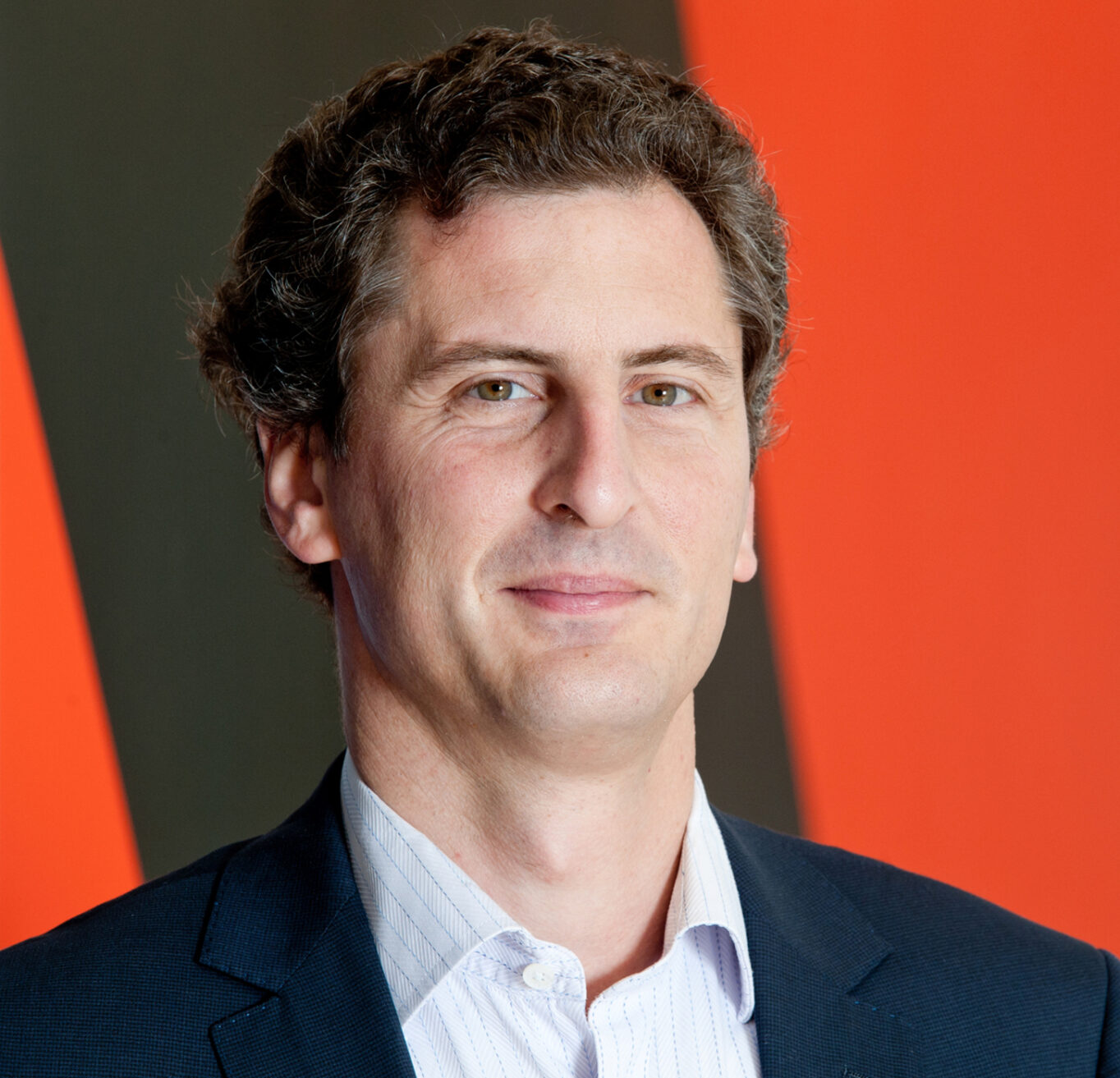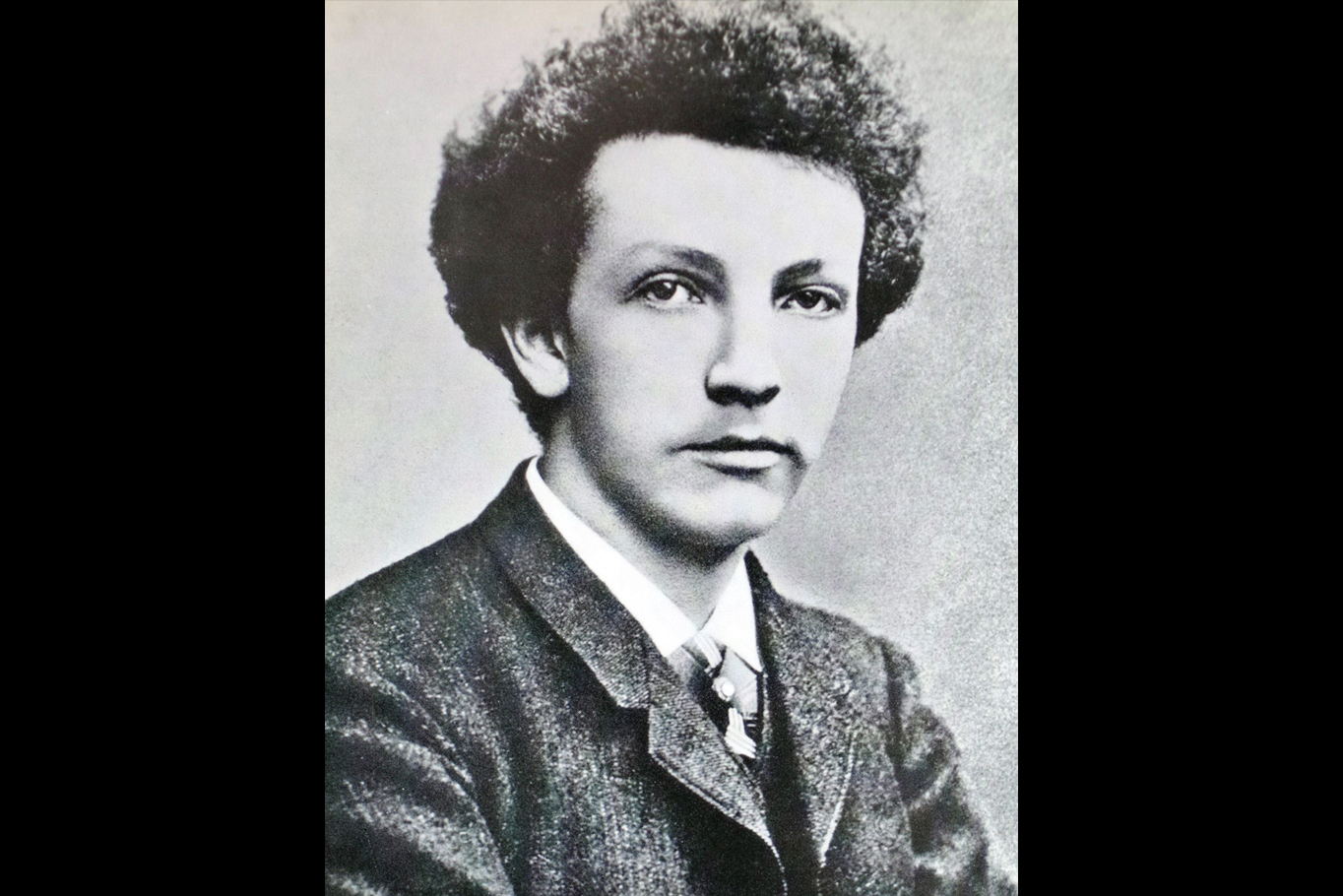
Introducing Giordano Bellincampi
10 May, 2024
The Italian-born Danish trombonist-turned conductor makes his Sydney debut in June, though he is intimately familiar with this part of the world – he has been Music Director of the Auckland Philharmonia for nearly a decade. Here he discusses his musical history and the program of Shostakovich and Strauss he is bringing to the Orchestra.
By Hugh Robertson
‘Oh! You are upside down!’
Conductor Giordano Bellincampi and I have been having a devil of a time trying to connect on a phone call. The first program we tried wouldn’t work on his laptop, and then I simply cannot get my video working on a second. But we finally connect, and ten minutes into our conversation my video snaps on – somehow with me upside down.
‘I mean, you are on the other side of the planet,’ says Bellincampi with a laugh.
The Italian-born Danish conductor knows a thing or two about the antipodes. He took up the post of Music Director of the Auckland Philharmonia in 2016, initially on a three-year term – but that relationship has been such a success that his tenure keeps getting extended, and just this year it was announced that he will stay on until the end of 2027.
This June will mark his first appearance with the Sydney Symphony Orchestra, in a fascinating and rich program of works by Shostakovich and Richard Strauss, featuring the superb pianist Alexander Melnikov – a terrific way for a new conductor to really get to know an orchestra, and to find out the breadth of their capabilities.
Bellincampi has held many titled roles over his career, including Music Director of the Danish National Opera and Copenhagen Philharmonic Orchestra. He was named Conductor Laureate of Kristiansand Symphony Orchestra in Norway in 2020, was made a Knight of the Order of the Dannebrog, an award bestowed by the Danish Royal Family for services to Danish culture, and he also holds the title of Cavaliere from the President of Italy.
He also keeps up a busy schedule in Europe, North America and Asia, and teaches at the Royal Music Conservatory in Copenhagen, and on the day of our interview he is preparing to conduct Puccini’s Tosca in Gothenburg, Sweden. It’s an amazing and varied career, though Bellincampi jokes that the constant flying to-and-fro isn’t exactly his favourite part of the job.
‘I just got a life gold membership as a frequent flyer, because of all the miles,’ he says with a wry smile. ‘Someday someone will ask, “What did you do with your life?” “Well, basically, I was sitting in an aircraft…”’

Bellincampi’s love of music began at an early age. Born in Rome with a mother who taught theatre history at the university, music – especially opera – was simply a fact of life. The family moved to Denmark when Giordano was 11, and having started out on the recorder (‘as most European kids do’, he says), he thought he might switch to the trumpet – but since he was already quite tall, with long arms, the bandmaster pressed a trombone into his hands instead.
‘So I became a trombone player!’ says Bellincampi with a laugh. ‘I started studying, went to the academy and started playing professionally when I was around 18 or 19. I got orchestra jobs, and I was super happy freelance and as a tenured player for some years.’
The conducting urge came later, and really started with a desire to become a better musician.
‘I also during my study time met the Finnish conducting teacher Jorma Panula,’ explains Bellincampi. ‘I found this strange man with this very specific technique incredible, because he could basically show everything that I could read in the score – and he could show with his hands. He didn't talk at all to the orchestra, he just did everything with his hands. And I thought, “Okay, it would be interesting to learn a little bit more about that in order to be a better orchestra musician.”’
It wasn’t long after that that Bellincampi was getting serious engagements as a conductor, and he says that although he still considers himself an orchestral musician at heart, he wouldn’t change a thing about his career.
‘I just enjoy this job,’ he says with a smile. ‘I think it's completely crazy. The more I do it – and I'm turning 59 this year, so now I've done it for some years – the more I do it, the less I understand what it is that we are actually doing. But somehow it works and it's fun.’
The program that Bellincampi has constructed for his Sydney debut is an absolute belter, precisely the sort of program you would construct to test the capabilities of an orchestra that you were working with for the first time, almost like taking a sportscar for a test-drive.
It is a concert in two halves. First are two works by Shostakovich: the firecracker that is the Festive Overture followed by his first Piano Concerto, with the incredible pianist Alexander Melnikov. And the second half is devoted to Richard Strauss and his tone poems Don Juan and Till Eulenspiegel’s Merry Pranks, full of compelling storytelling and rich characters.
‘I think it will show the orchestra in a great way,’ says Bellincampi, outlining the process of selecting this particular repertoire.
‘We started by wanting to have some Richard Strauss in the program. The idea was let's, let's present those two – Don Juan and Till Eulenspiegel – which show all the youthful energy of Richard Strauss and this incredible, colourful but also really deep music. And that made out a perfect half that speaks for itself.’
‘Then we had the wonderful opportunity of a great soloist who wanted to present the Shostakovich concerto. And you have one of the best trumpet players in the world, probably, as Principal Trumpet. So we already have this Richard Strauss world in the other half – we need to stage the Shostakovich world so we are not making it too complicated.’
‘So two halves of two of the really great composers of the 20th century. It's fun to play, and I'm sure it would be super fun for the audience to listen to.’
Shostakovich is a composer who can deter listeners. The popular conception of him is as the tortured artist struggling under the yoke of Stalinism and censorship, writing dark and intense works about war and suffering. And while that is certainly true of his later works, the pieces he wrote as a young man – which includes his First Piano Concerto – are full of wit, humour, and the fizzing energy of a new talent coming to understand the extent of his talent.
Bellincampi argues that something of the later darkness is present in these early works, too.
‘There's always a bit of ambiguity in Shostakovich,’ he says. ‘Even in the Festive Overture…still there is a little bit of a bittersweetness in the way that he goes around in the music. And I think he perfectly expresses, basically the story of Europe in the 20th century – especially of the first half of the 20th century. We had some of the most incredible things happening in the art world, and some of the most innovative thinking in all intellectual and artistic circles, and at the same time, some of the most terrible things that humans as ever have ever done to each other.’

Richard Strauss, on the other hand, responded to the horrors of World War II by retreating from the world and deeper into his music. ‘Strauss, one could say – it's very superficial analysis – but he stays more detached from all this, and dives more and more his aesthetics during the 1940s, become more and more classical and going back to some basic value of the European civilisation.’
That tendency towards classicism and tradition was always present in Strauss’ music, evidenced by these two pieces which were written before his 30th birthday. Bellincampi feels that it’s that deep love for tradition that makes Strauss so beloved by musicians.
‘Although he doesn't write a Classical symphony as such, you can sense his love for Mozart, for instance, all the time,’ he says. ‘His way of writing a Don Juan serenade for harp and oboe here is very much linked, in my opinion, to the Mozart Don Giovanni serenade with the mandolin.’
The other aspect of Strauss’ work that musicians love is the richness of it: the texture of the sounds he conjures, and the way he knows exactly how to extract everything from an orchestra. ‘He's just all over the top with everything,’ says Bellincampi with a smile. ‘Harmonies, instrumentation, dynamics, form, everything. He kind of he goes to the boundaries of everything all the time.’
These two pieces by Strauss also include great riches for the audience in that they tell a story through music – a style known as ‘program music’ that was a major feature of the late 19th century, with Strauss in particular celebrated for his programmatic works.
At the time the idea was hugely controversial, and factions formed among those who saw program music as a logical evolution of music, and others who believed that purely abstract music was the only acceptable form.
‘The accessibility of program music is that it gives you a sense of grabbing something that you can listen to,’ says Bellincampi.
‘Here we have stories. We have basically, like in a theatre play or film score or something, you have a story that goes with it. The superficial part of it is that the effects of the music, the feelings that are in the music, are also described by words – which somehow can make it easier for us to listen to, like, “Oh, this is depicting this particular situation.”
‘But the really good program music actually gives you many other layers to listen to. And, you can have all symbolic layers into it. A storm can be a storm, but it can also be an inner storm or a love scene. You could have a love scene full of joy and hope, but it can also be a love scene full of despair because this will end badly, you know?
‘Sometimes it can be better not to know what the music is about, even in program music, and to make your own picture about what this is. Because you can listen to Don Juan and then you get a completely different story in your mind. And that's also fine! There's no right or wrong, it's not like, “Oh, you have to be able to hear something specific.” But of course it has an immediate impact, to know the story or the poem behind some specific program music.

Before we wrap up, I ask Bellincampi what it is that he is most excited by in this concert. I expect him to say something personal – perhaps about debuting in Sydney or performing with Melnikov – or about the joy he derives from performing and conducting these pieces of music. But his answer is entirely focused on the audience.
‘From a very, very basic perspective as an audience member, it's simply exciting music,’ he says with a smile. ‘There's a lot there's a lot of excitement in this program, which means that you can walk in and you can really enjoy what all these players are actually able to do at the same time. It seems banal, but the artistry part of going to an event, I think is also important.
‘You simply go there and say, “Whoa, that's really something!” And, and there are plenty of occasions in this program to, to really enjoy that.’
